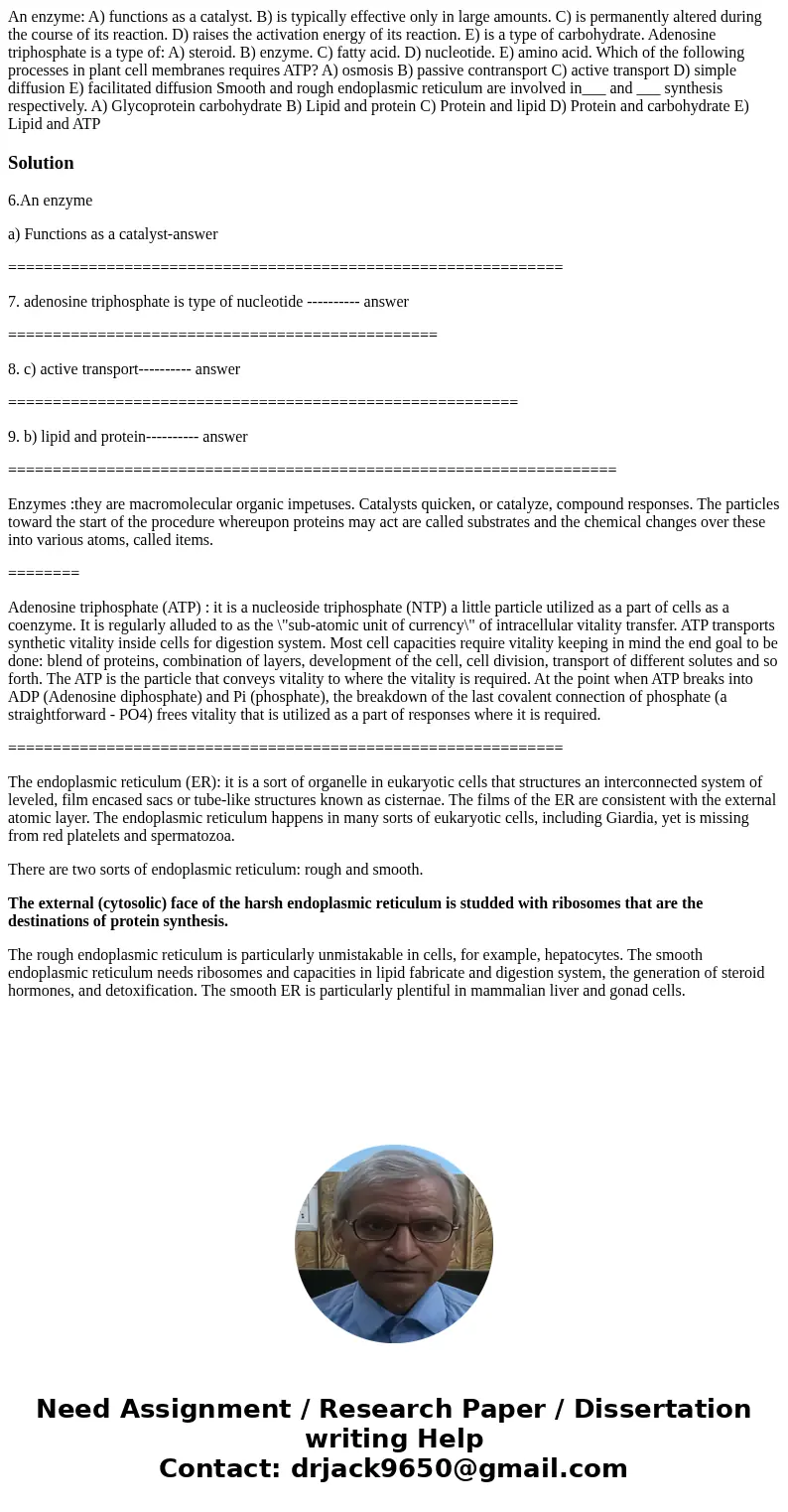An enzyme A functions as a catalyst B is typically effective
Solution
6.An enzyme
a) Functions as a catalyst-answer
==============================================================
7. adenosine triphosphate is type of nucleotide ---------- answer
================================================
8. c) active transport---------- answer
=========================================================
9. b) lipid and protein---------- answer
====================================================================
Enzymes :they are macromolecular organic impetuses. Catalysts quicken, or catalyze, compound responses. The particles toward the start of the procedure whereupon proteins may act are called substrates and the chemical changes over these into various atoms, called items.
========
Adenosine triphosphate (ATP) : it is a nucleoside triphosphate (NTP) a little particle utilized as a part of cells as a coenzyme. It is regularly alluded to as the \"sub-atomic unit of currency\" of intracellular vitality transfer. ATP transports synthetic vitality inside cells for digestion system. Most cell capacities require vitality keeping in mind the end goal to be done: blend of proteins, combination of layers, development of the cell, cell division, transport of different solutes and so forth. The ATP is the particle that conveys vitality to where the vitality is required. At the point when ATP breaks into ADP (Adenosine diphosphate) and Pi (phosphate), the breakdown of the last covalent connection of phosphate (a straightforward - PO4) frees vitality that is utilized as a part of responses where it is required.
==============================================================
The endoplasmic reticulum (ER): it is a sort of organelle in eukaryotic cells that structures an interconnected system of leveled, film encased sacs or tube-like structures known as cisternae. The films of the ER are consistent with the external atomic layer. The endoplasmic reticulum happens in many sorts of eukaryotic cells, including Giardia, yet is missing from red platelets and spermatozoa.
There are two sorts of endoplasmic reticulum: rough and smooth.
The external (cytosolic) face of the harsh endoplasmic reticulum is studded with ribosomes that are the destinations of protein synthesis.
The rough endoplasmic reticulum is particularly unmistakable in cells, for example, hepatocytes. The smooth endoplasmic reticulum needs ribosomes and capacities in lipid fabricate and digestion system, the generation of steroid hormones, and detoxification. The smooth ER is particularly plentiful in mammalian liver and gonad cells.

 Homework Sourse
Homework Sourse